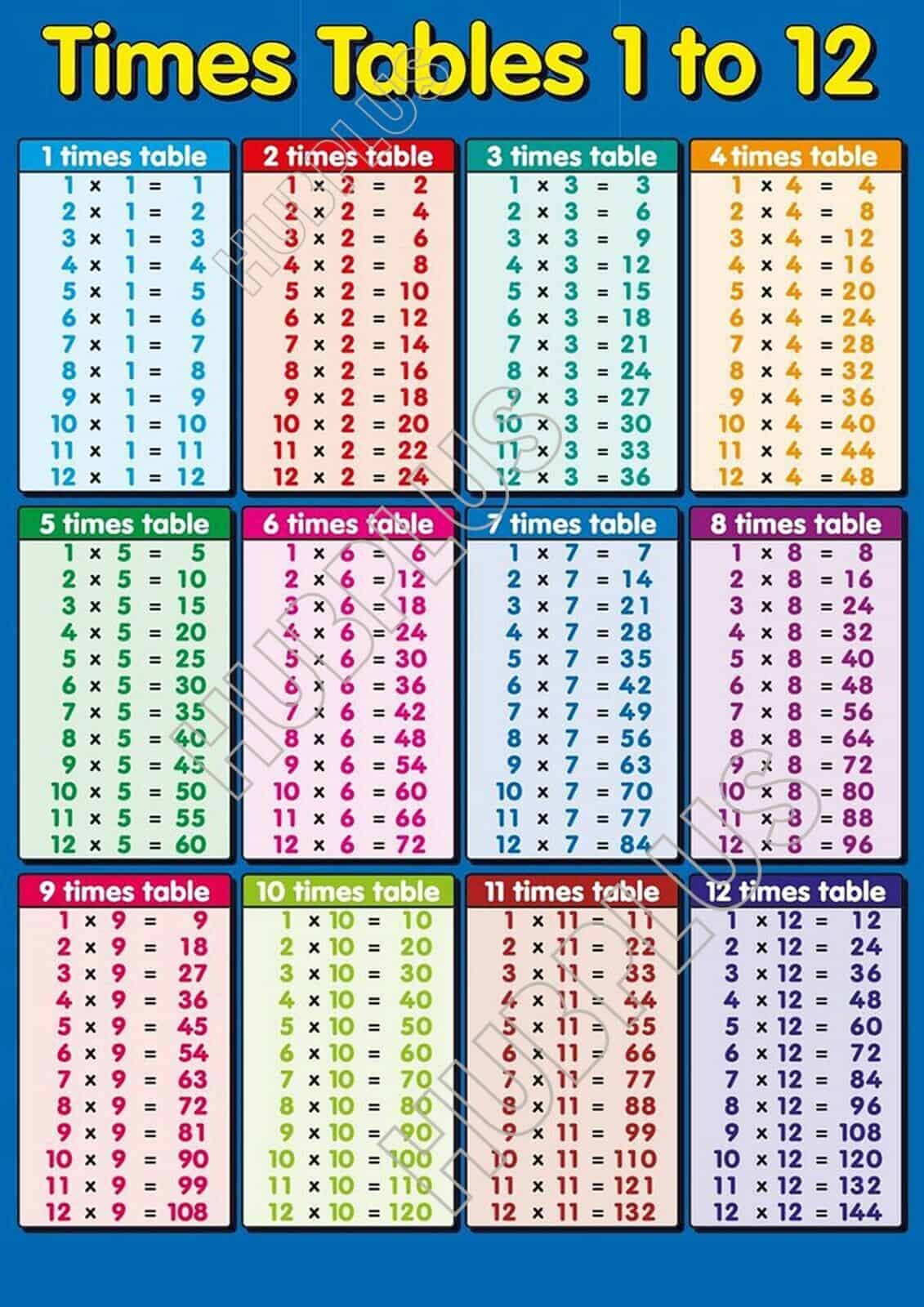Mastering Multiplication: A Fun Guide for Parents to Teach Times Tables
Hello wonderful parents! Are you gearing up to dive into the world of numbers with your little ones? Fear not, because we’re about to embark on a delightful journey through the land of times tables, where fun and learning coexist harmoniously! ?
The Importance of Times Tables in Early Education
Before we leap into the ‘how-tos,’ let’s chat about the ‘whys.’ Multiplication tables form the building blocks of arithmetic. A firm grasp of these can supercharge a child’s ability in math, paving the way for future concepts like division, fractions, and even algebra. That’s right, knowing their times tables can set kiddos up for a lifetime of mathematical success!
When to Start Teaching Times Tables
Timing is everything! Children are usually ready to start learning times tables from around the age of 7 or 8, but every child is a unique star in the mathematical galaxy. It’s all about balancing enthusiasm with ability, so keep an eye out for when they’re showing interest and confidence in their counting skills.
The Magic of Patterns in Multiplication
One of the coolest things about times tables is the patterns they reveal. It’s like a secret code waiting to be cracked! As you explore these tables with your little mathematicians, highlight patterns like the even numbers in the table of 2 or the magical number 9 trick where the digits of the answers add up to 9. Not only does this make learning more engaging, but it also acts as a mnemonic aid to help those facts stick.
Fun Strategies to Teach Times Tables
- Visual Aids: Children love visuals! Use colorful charts, flashcards, or anything that catches their eye. These can be hung around the home for passive learning. Every time they pass by, they’ll be reinforcing their knowledge.
- Gamify Learning: Turn multiplication into a game. There are heaps of educational games out there designed to make times tables exciting. Whether it’s apps, online games, or good old-fashioned board games, find something that resonates with your child and play, play, play!
- Times Tables Songs: Music is a great learning tool. There are countless tunes and rhymes that can help lock those multiplication facts into memory. Have a dance party while chanting the tables, or create your own family band with multiplication lyrics!
Starting with the Basics: The 2 Times Table
Begin with the essentials. The 2 times table is usually the easiest for children to grasp because it follows the same pattern as counting by twos. Here’s a fun way to practice:
‘Two little ducks went out one day, over the hills and far away. When they came back, how many feet did they have?’ This simple rhyme can lead onto the answer: ‘Four feet in total, because 2 times 2 is always 4!’
Start by using real-life scenarios like this, then gradually work your way up through the tables as confidence grows. Remember, consistency is key to mastering multiplication.
Practice Tips for Busy Families
We get it, life can sometimes be a whirlwind of activity, and finding time to practice can feel daunting. But integrating little math moments into your daily routine can be a game-changer. Quiz your child on their times tables during car rides or while cooking dinner. It’s all about those spur-of-the-moment mini-lessons that can make learning feel effortless.
Ready to continue this number-filled adventure? Stay tuned for more tips, tricks, and insights on how to help your child become a times table titan! For now, remember that patience, positivity, and persistence will go a long way in making math a joyous part of your child’s life. Keep the fun factor alive, and watch as their confidence with numbers multiplies! ?
Stay with us on this exciting educational journey, where we promise to make the world of multiplication a happy place for both parents and children alike. Keep encouraging those little learners because every moment spent together with numbers is an investment in their bright mathematical future!

5 Things Parents Should Know in Preparing for Times Tables
As we venture further into the enchanting domain of multiplication, let’s take a moment to sprinkle some preparatory pixie dust. Here are 5 golden nuggets of wisdom for you, dear parents, as you set the foundation for triumphant times table learning:
- Start with Concrete Examples: Kids need to understand the concept of multiplication before they can memorize the tables. Use real objects like toys, fruits, or even candies (with moderation, of course!) to demonstrate simple multiplications.
- Interactivity is Key: In the digital age, interactive tools abound. Online platforms offer dynamic ways to grasp multiplications through engaging visuals and hands-on exercises, so don’t shy away from using technology as a teaching aid.
- Choose the Right Pace: Not all children will master times tables at the same speed. It’s essential to match your teaching pace to your child’s learning speed. Celebrate their progress, no matter how small, and provide gentle encouragement to keep the flame of learning alive.
- Encourage Mental Math: While it can be tempting to turn to calculators, encourage mental math as this strengthens numeracy skills. Prompt your child with random times tables questions to sharpen their quick-thinking abilities.
- Create a Supportive Environment: Frustration can quickly douse the enthusiasm for learning. Maintain a patient, supportive atmosphere at home where mistakes are seen as natural steps in the learning journey.
Building Confidence with Interactive Tools and Games
Tackling times tables doesn’t have to be a solitary climb; it’s more like a fun-filled expedition with the whole family! Utilize interactive tools such as times tables apps that teach through playful quizzes or adventure-themed games that capture the imagination while educating. Board games, puzzles, and card games can also turn multiplication into a family event, making for both a splendid bonding experience and a rich learning opportunity.
Gradual Progression Through the Times Tables
As their confidence soars on the wings of the 2 times table, start introducing the higher tables bit by bit. Layer their learning, always ensuring a solid understanding of one table before stacking another. Commence with the 5s and 10s, which align beautifully with the decimal system, making them more intuitive for children.
Then, meander through the 3s and 4s, which introduce a moderate level of complexity but remain within a comfy zone for budding minds. Present each new set of multiplications with creative pomp and circumstance—perhaps a “3 Times Table Treasure Hunt” or a “Fabulous 4s Fiesta,” complete with corresponding treats and decorations.
Leveraging Real-World Scenarios
Connect the dots between abstract numbers and reality by leveraging day-to-day scenarios. “If we have 3 family members and each needs a pair of gloves, how many gloves do we need in total?” This practical application of the 3 times table showcases relevance, stirring an intrinsic motivation to learn.
Progressing from times tables to real-world uses bridges the gap between homework and the universe outside the classroom. It transforms an arithmetic exercise into a life skill, igniting a lightbulb moment where multiplication’s value is truly grasped.
Stay with us on this educational journey! We’re excited to share everything from clever tricks to smart activities designed to make your child’s multiplication voyage a thrilling and successful one. Underneath it all, the most critical ingredient is your unwavering support, which will indeed nurture your child’s budding enthusiasm for the capt
ivating world of numbers.
For more great fun click here. For more information see here
Disclaimer
The articles available via our website provide general information only and we strongly urge readers to exercise caution and conduct their own thorough research and fact-checking. The information presented should not be taken as absolute truth, and, to the maximum extent permitted by law, we will not be held liable for any inaccuracies or errors in the content. It is essential for individuals to independently verify and validate the information before making any decisions or taking any actions based on the articles.




